Read next
The latest news, updates and expert views for ambitious, high-achieving and purpose-driven homeowners and property entrepreneurs.

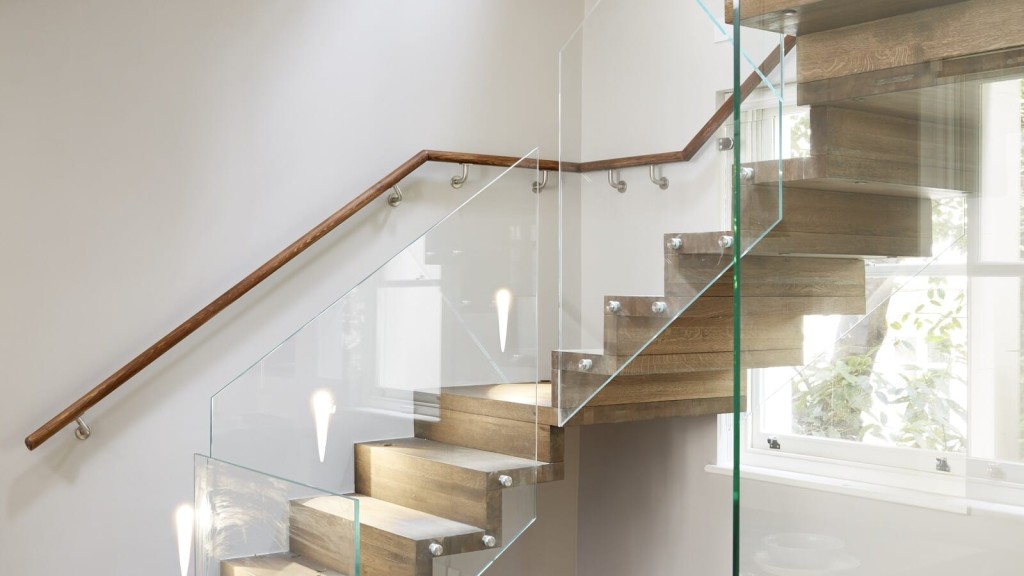
Nestled within the bustling streets of London are hidden gems of residential grandeur, each telling its own story of luxury transformation.
From opulent homes in Kensington to architectural wonders in Belgravia, there’s no shortage of luxury home refurbishments in our vibrant city. Today, we’ll be exploring how each of these homes has been reimagined into lavish sanctuaries, setting new benchmarks in luxury living.
As we journey through some of London's most prestigious postcodes, we’ll uncover the meticulous craftsmanship and luxury interior design principles that redefine the concept of home. Whether you're a design aficionado, a homeowner seeking inspiration, or if you simply enjoy looking at luxury interiors, this exploration of London's finest home refurbishments is for you.
Before we delve into the examples curated by our expert team, let's first explore what distinguishes a renovation as luxury, understand the costs involved in refurbishing, and grasp how long the process typically takes – essential insights you’ll need to imbue your home with a spot of expertly placed sparkle.
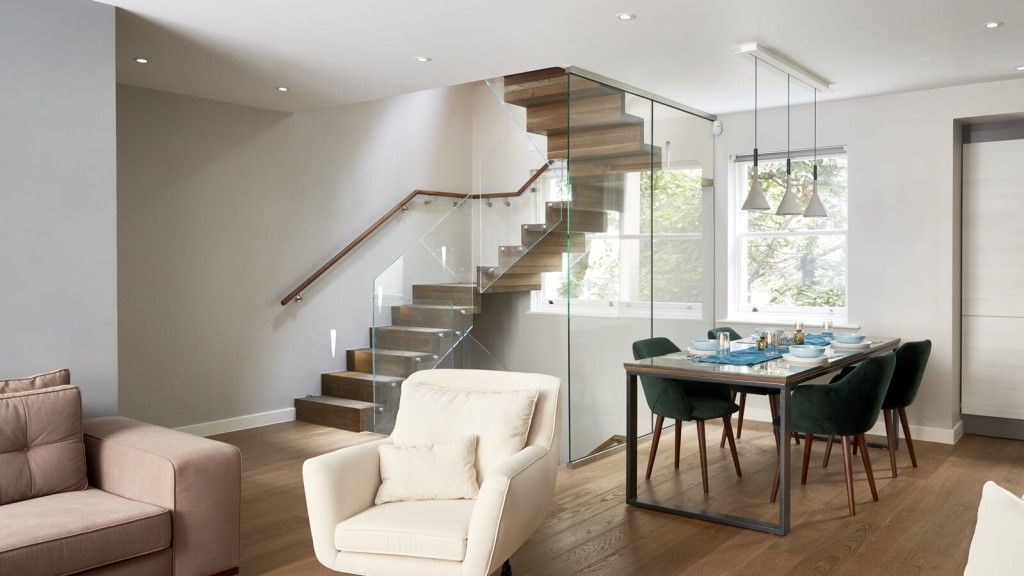
In the historic heart of London, luxury high-end home refurbishments are about more than just opulence; they’re about creating classy, livable spaces that reflect both the owner's tastes and lifestyle.
These high-end, customised refurbishment projects - whether in private residences, apartment flats, or commercial spaces - stand as testaments to the essence of luxury design: a marriage of elegance and functionality.
Key characteristics that define high-end refurbishments in London include:
Luxury spaces are often personalised with creative architectural solutions, custom-made furniture, and contemporary art, each element reflecting the unique persona of its owner. The true hallmark of luxury in these spaces is their ability to tell the owner's story, creating interiors that are not just visually stunning but emotionally resonant.
High-end refurbishments in London often feature expansive, thoughtfully designed spaces that emphasise fluidity and openness, creating an instant sense of awe upon entering a room. This feeling can be achieved through the use of structural elements like glass walls, skylights, and open-plan layouts, which create a seamless flow between spaces giving a sense of freedom and luxury.
The calibre of materials used is crucial when it comes to luxury refurbishments. From rare marbles and exotic woods to bespoke textiles and artisanal fixtures, luxury materials focus on quality over quantity and are timeless as opposed to trend-driven.
Close attention to craftsmanship and detailing is paramount in creating luxury spaces. Traditional techniques and workmanship are blended with modernity to create unique features such as custom mouldings, handcrafted woodwork, and precision-engineered fittings. These details are not just decorative, but are integral to the overall design narrative, adding layers of texture, history, and personality to a space.
A hallmark of high-end refurbishments in London is the innovative use of lighting to create a mood. Strategic placement of lighting, both natural and artificial, is used to highlight architectural features, artwork, and key living areas. Advanced lighting systems often feature customisable settings, which allow residents to adjust the light to suit different times of day and occasions, greatly enhancing the ambience of a space.
Integrating the latest technologies - through automation, security, and energy efficiency - propels a space to another level of luxury. Whether it's climate control, lighting, entertainment, or security, these smart systems are designed to operate subtly in the background, offering a sophisticated, effortless living experience that epitomises modern luxury.
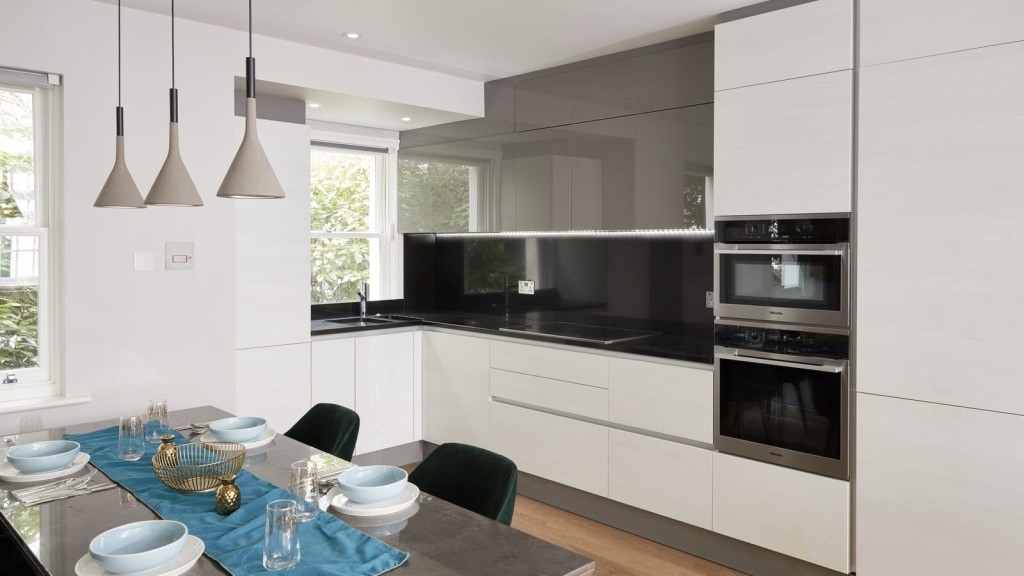
In London's luxury refurbishments, historic and cultural elements play an integral role, elegantly bridging the city's rich past with contemporary design sensibilities. These elements are meticulously woven into each project, infusing them with a unique character that reflects London's diverse architectural and cultural heritage.
By preserving and highlighting historical features like ornate cornices, traditional facades, and original woodwork, luxury refurbishments offer a respectful nod to the past while embracing modern luxury.
The cultural richness of London also deeply influences these refurbishments. Designers incorporate local traditions, art, and history into their designs, creating spaces that not only exude luxury but also tell a story. This narrative approach adds depth and authenticity, making each space a testament to the city's evolving identity.
Additionally, the fusion of classic and contemporary art within these spaces creates a dialogue between different eras, paying tribute to London's status as a global art hub. This blend of art forms enhances the visual appeal and adds layers of cultural significance to the living spaces.
Ultimately, luxury refurbishments in London are about more than just opulence; they are a celebration of history and culture. By integrating these elements, they achieve a timeless quality, turning each space into a curated piece of London's ongoing story.
The average cost of a high-end refurbishment in London varies significantly depending on the complexity of the design, the extent of structural works required, and the level of fixtures, fittings, and material finishes selected. Costs will also fluctuate depending on your architect's fees, statutory fees, fees for various other professional services, as well as expenses related to audits and assessments.
Customisation is also a key driver of costs in the world of luxury refurbishments. The intricacy of architectural and interior design elements - such as detailing, custom-made furnishings, and artisanal finishes - can also contribute to higher costs.
Just like the costs, the timeframes of how long a luxury refurbishment project takes to complete in London can vary hugely. The timeline can range anywhere from several months to well over a year, depending on a variety of factors.
First and foremost, the complexity of the project will play a significant role in determining how long it will take to complete. Projects that involve extensive structural changes, architectural innovations, or the preservation of historic elements often require more time.
Additionally, the size of the property being refurbished is a crucial factor. As you would imagine, larger properties tend to take longer to renovate and customise to perfection. Speaking of customisation, the level of detail and customisation involved in the project can also affect the timeline, especially when it includes unique fixtures and bespoke finishes that require extra time and care.
Sometimes there can be delays in securing necessary approvals, such as planning permission and licence to alter, which can also extend the project's duration.
Lastly, the availability of specific materials and finishes can impact the timeline. Rare or custom materials may take longer to source and incorporate into the project.
To make sure your project stays on time, it's important that your project manager builds a realistic timeline tailored to your specific project, all while keeping the lines of communication open and planning effectively to ensure the project stays on track and is completed within the expected timeframe.
The blend of historic preservation with contemporary design remains a key trend in London's high-end house refurbishments. Sustainability is also a key consideration, with a focus on eco-friendly materials and energy-efficient technologies reflecting a growing emphasis on environmental responsibility in luxury living.
Another significant trend is the creation of multifunctional spaces. Post-pandemic, homes are being redesigned to include dedicated home offices, wellness areas, and versatile entertainment zones, catering to the changing lifestyle needs of residents.
As mentioned earlier, there is also an increasing use of smart home technology, offering residents bespoke, automated solutions that enhance convenience and security. This integration of technology with design elevates the functionality of these luxury spaces, making them not just homes, but intelligent living environments. These trends collectively showcase London's ability to harmonise tradition with innovation, setting new standards in luxury refurbishments.
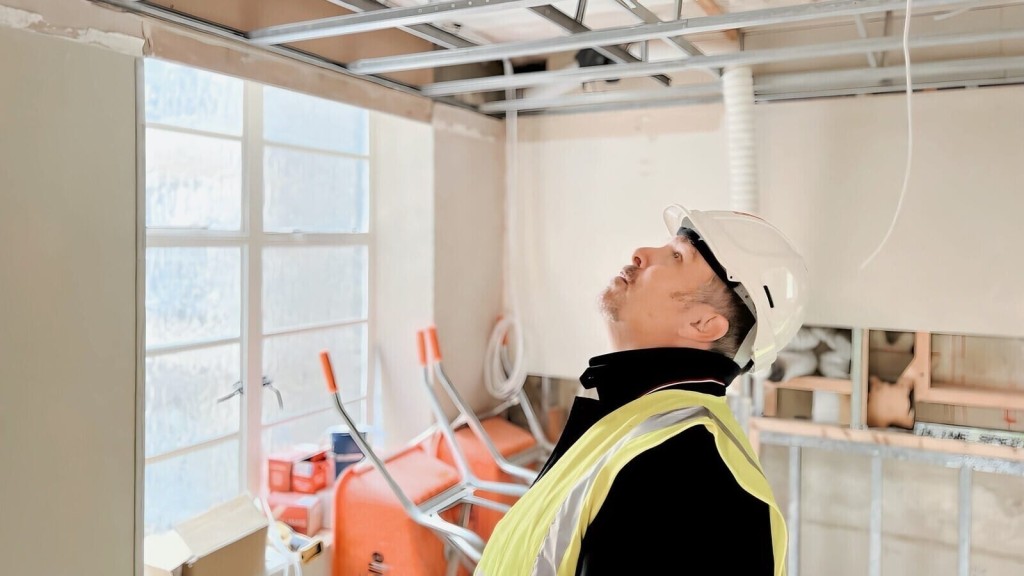
In the exclusive world of luxury home refurbishments in London, navigating the project landscape is a complex yet rewarding journey. However, this journey is not without its challenges.
From the initial sketches to the final touches, there are potential pitfalls to be aware of, and understanding these challenges is key to ensuring as smooth a refurbishment journey as possible.
Here are some of the most common mistakes contractors and builders make in high-end refurbishments and the consequences they can have:
In sum, navigating these challenges in luxury home refurbishment demands a blend of precision, foresight, adaptability, and meticulous planning, transforming potential obstacles into stepping stones toward creating spaces of unparalleled luxury and elegance.
Now to the part of the article you’ve been waiting for - real examples of some of the best luxury home refurbishments in London. The luxe refurbishments we’ve selected have been carefully curated by our team and include renovations and refurbishments that focus on certain design elements to produce their luxury feel. Specifically, these elements are choices around furniture, colour, materials, and structural choice.
By the end, we hope you’ll have some ideas for integrating a bit of luxury style into your space, or maybe you’ll even feel inspired to overhaul your home and take it to the next level of luxury.
Alright, let’s jump in and take a look at some of London’s finest luxury refurbishments.
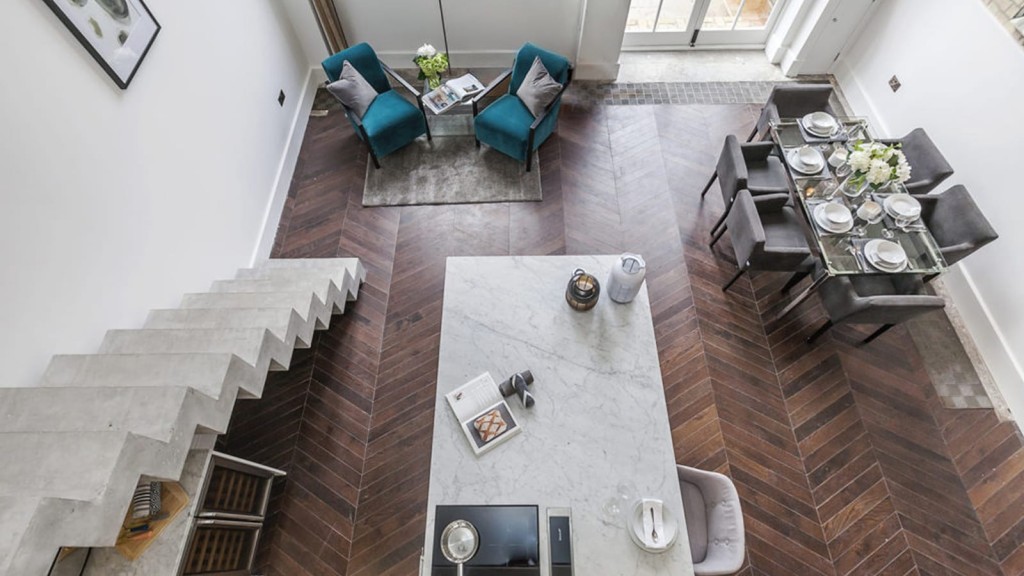
Transform your home with intelligent space planning, a vital part of luxury refurbishment. As the design pictured above articulates, the right arrangement and furniture placement in multifunctional areas help create seamless transitions, lifting the design to opulent heights. Further, a balanced colour scheme mingling warm and cool shades adds an element of elegance, while crisp white walls create the perfect backdrop. Even if you aren’t completely gutting your home and starting from scratch, clever furniture placement and thoughtful use of colour are ways you can easily bring luxury to your space.
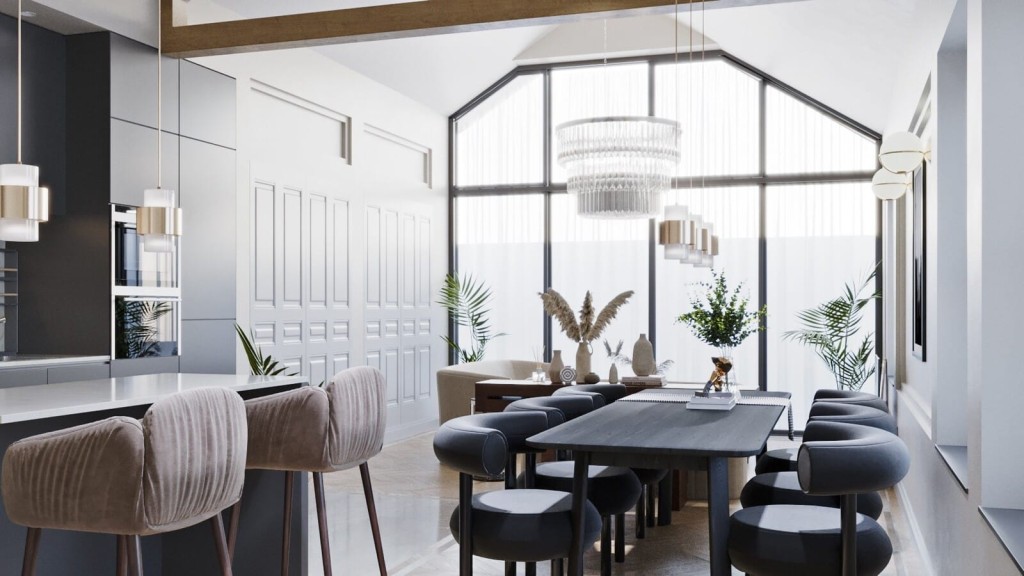
In this design, we witness the pivotal role customised furniture plays in infusing a space with a luxury feel. This bespoke approach considers the interplay between the size, shape, and material of the furniture, elevating the space's overall concept. This means each piece of furniture is highly considered before purchase, focusing not just on aesthetics but on its functionality within its environment.
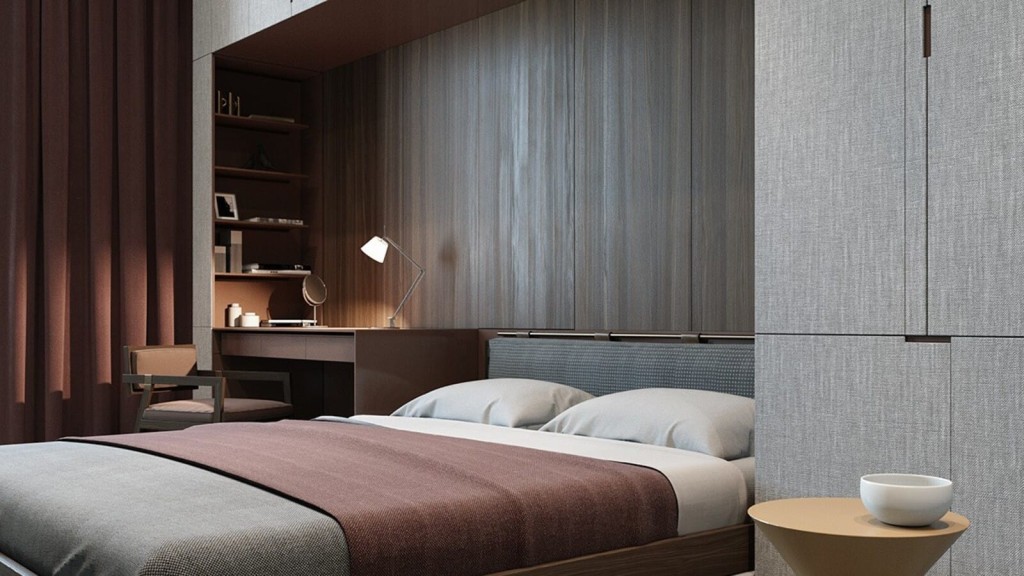
Image credit: Behance: A. Apartment
To make the most of your living spaces, especially in compact areas, consider opting for integrated furniture, as displayed in this clever design. These multifunctional pieces are not just space-saving but can also be extremely chic. For small apartments or rooms, a sofa bed or a wall-mounted desk can be a game-changer. In kitchens and dining areas, think about extendable tables or bench seating with hidden storage. By choosing furniture that serves more than one purpose, you not only save space but you’re also able to maintain a clean, uncluttered look, essential for a harmonious home environment.
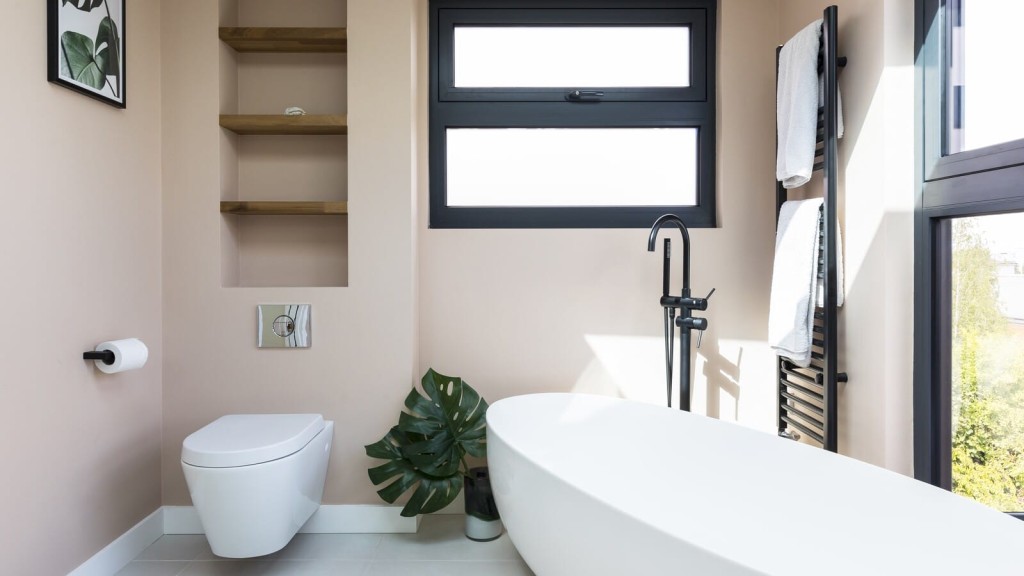
Recognising the distinct purpose of each space in the home is fundamental in high-end interior design. For example, in a luxury bathroom like the one pictured, the design should facilitate effortless use while showcasing quality finishes. Thoughtful furniture arrangement, tailored storage solutions, and a palette of soothing colours, all serve to blend everyday utility with elegance, equating to instant, understated luxury.
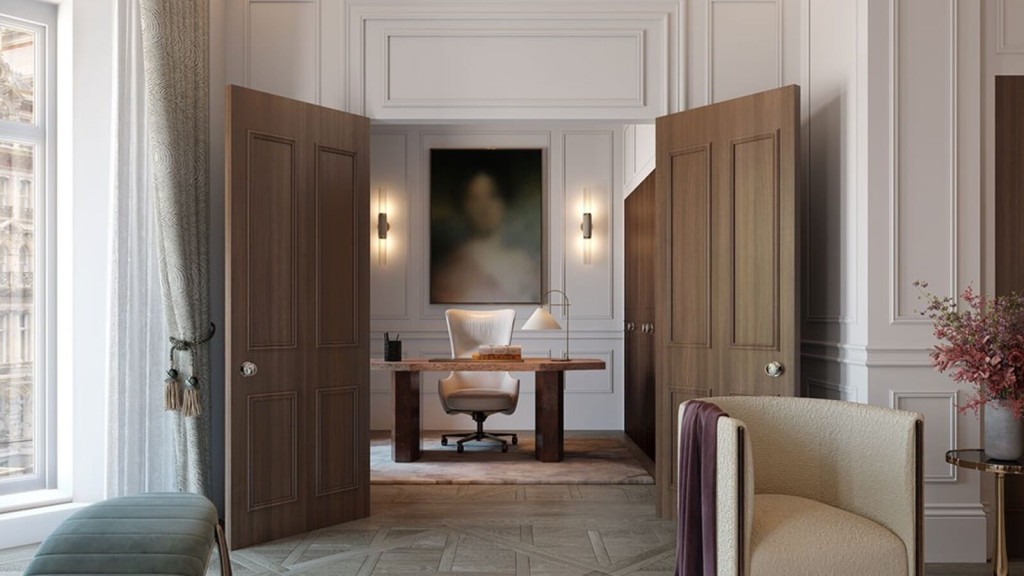
Image credit: 8 Eaton Lane by CIT (CIT GROUP PARTNERS LLP)
As this design masterfully illustrates, in designing interconnected spaces for luxury refurbishments, a bidirectional approach is key. Adopting a unified interior design language ensures that the aesthetic of one room complements and enhances the other, maintaining strong design integrity. As we see here, materials, colours, and furniture have all been selected for their cohesive style. The strategic use of lines heightens the room, while the patterned floor adds a sense of luxury and intrigue. When designing adjacent spaces, consider visual connectors like colour themes or pattern continuities to create a seamless transition, enhancing the overall luxurious feel.
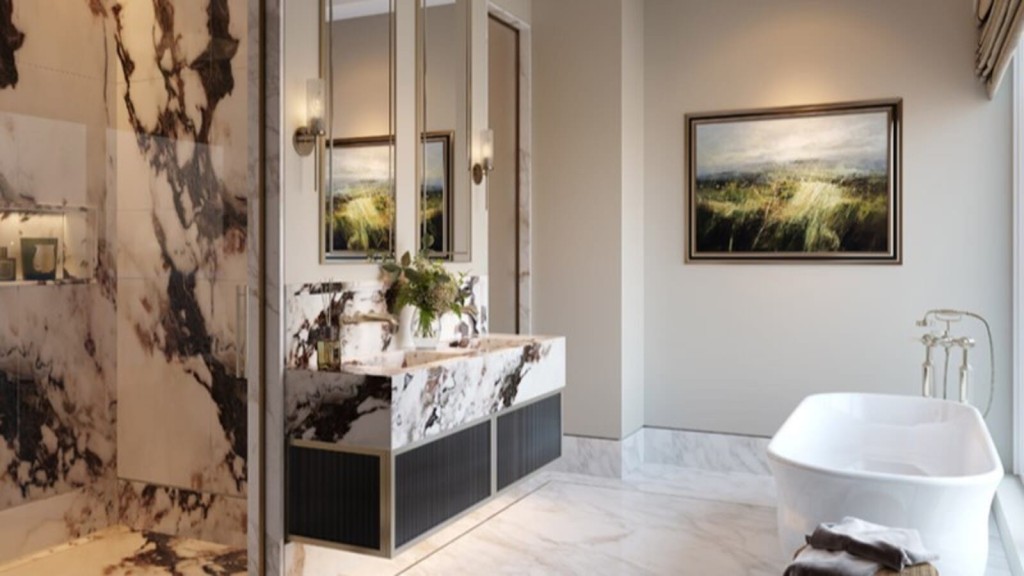
Image credit: 8 Eaton Lane by CIT (CIT GROUP PARTNERS LLP)
Marble can propel a space's elegance to another stratosphere, and is a particularly effective material to use in wet areas as we can see in this design. Utilising two different styles of marble can create aesthetic richness and add another layer of luxury, however it’s important to think about colour harmony, contrast, pattern, texture, quantity, and distribution when choosing complementary marble types. Opting for marbles of equal quality and durability boosts the overall cohesion and sophistication of the space.
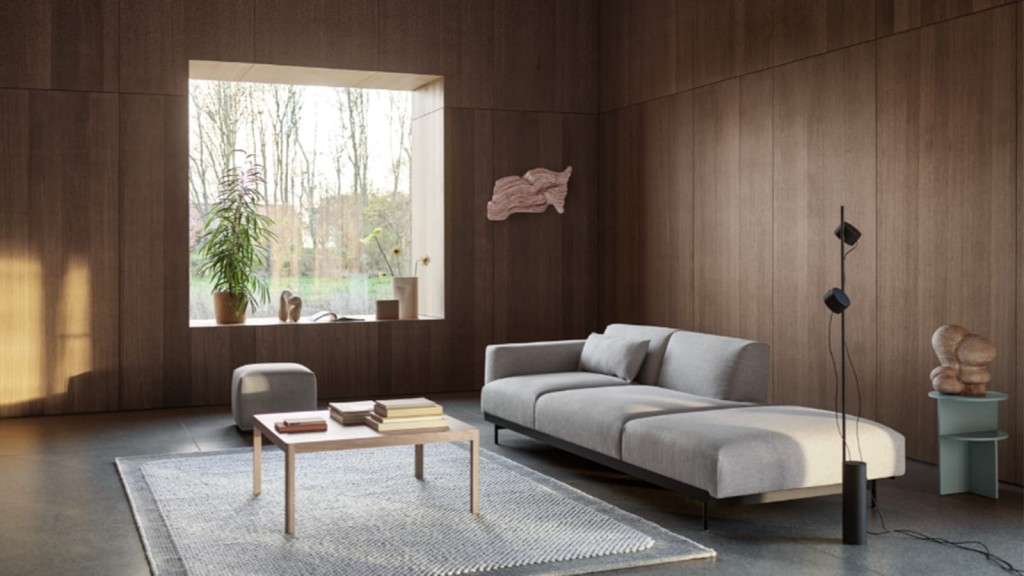
Image credit: Muuto
In the realm of luxury home refurbishment, utilising wood in modern and minimalist interiors creates a blend of natural elegance and warmth, which is clearly seen in this space. Wood is highly compatible with modern minimalist lines, adding a balanced and harmonious dimension to interior spaces. Enriched by its organic beauty, wood is a material that fits perfectly with high-end luxury refurbishments, creating warmth and adding a touch of timeless luxury.
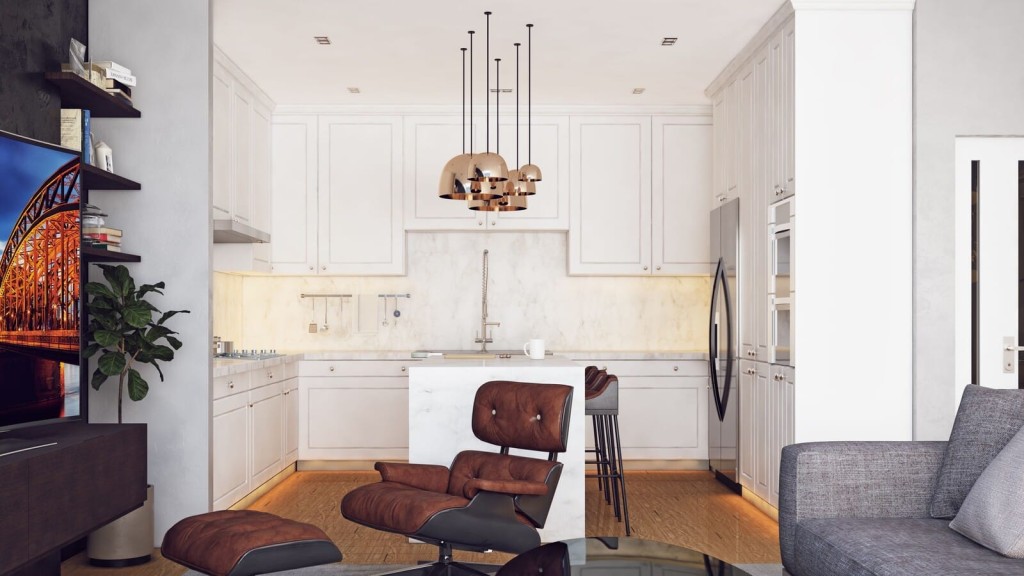
In the world of luxurious interior design, crafting a seamless link between semi-private kitchens and living areas as we see in this design can significantly elevate your space. Further, opting for a dominant palette of white tones, complemented by marble details creates a serene and cohesive ambiance. For an added feeling of luxury, consider adding subtle lighting in the kitchen to further accentuate the marble textures. Remember, in luxury interiors, it's the attention to detail that truly makes the difference.
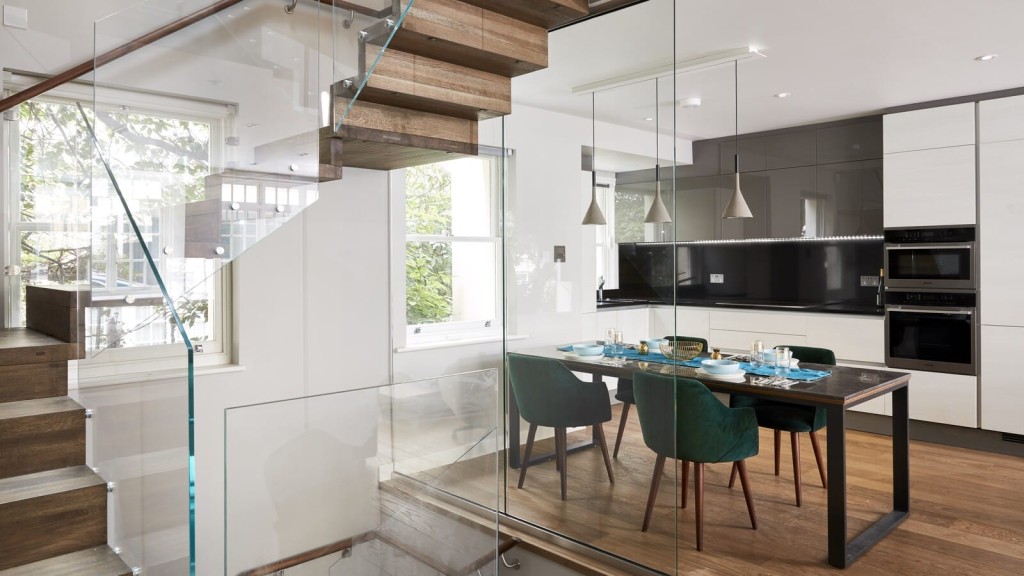
In the realm of high-end interior design, utilising contrasts is a smart approach and is expertly executed in this refurbishment. However, it's not just about contrasting colours; the magic lies in blending material textures, reflectivity, and opacity. Imagine an interior where the glossy sheen of cabinet doors dramatically contrasts with the understated, matte finish of velvet. Thoughtful, unexpected contrasts like this are simple ways of elevating a space’s sophistication.
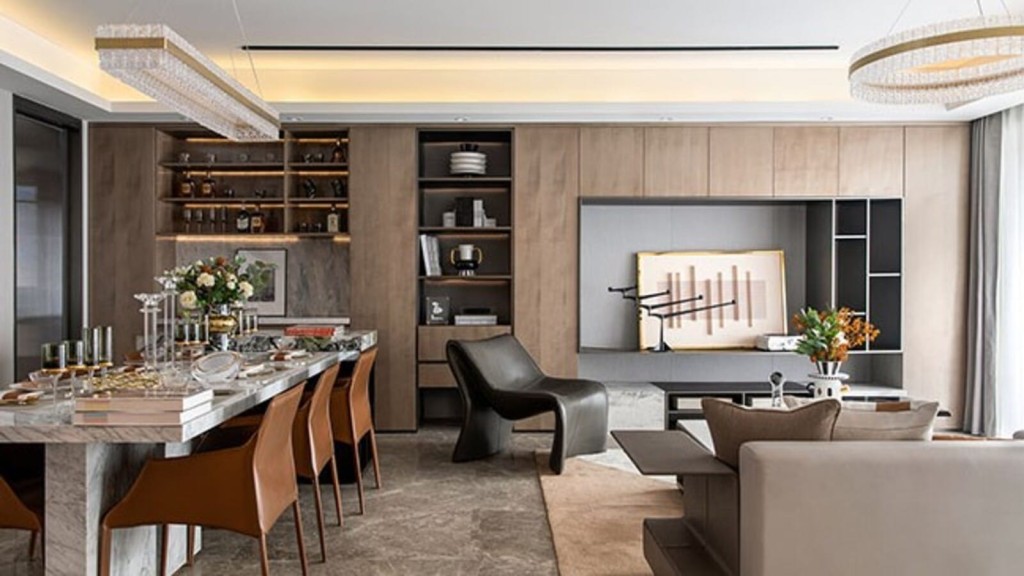
Image credit: Greentown Trees Villa by Qiran Design Group
Create an eclectic space that fuses the best of both modern and classic styles. As illustrated in this luxury refurbishment, eclectic interiors embrace the bold, effortlessly blending various styles, periods, and elements to create a truly distinctive space.
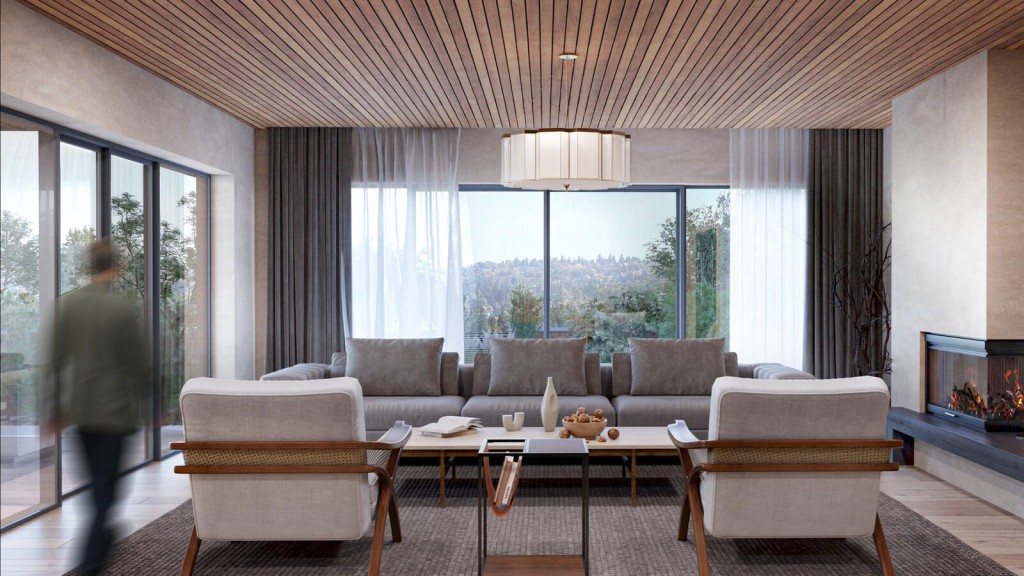
An interior style that’s popular at the moment is Japandi - the fusion of Japanese and Scandinavian design - which is the epitome of simple, understated luxury. Elements of Japandi are reflected in this design; a focus on natural light, the use of light timbers, and a calming, neutral colour palette. If you love luxury design but aren’t into bold colours or ostentatious furnishings and finishes, then Japandi could be the quieter style of luxury for you.
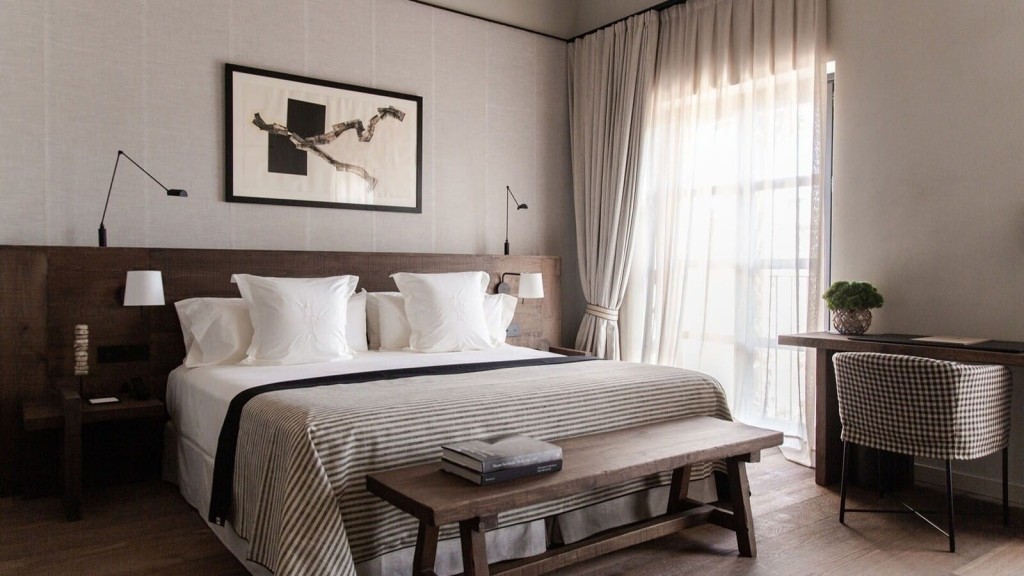
Image credit: Can Ferrereta, Santanyi
As we see in this luxury yet rustic bedroom, natural and warm materials work really well to create a simple and comfortable atmosphere.
Key points for creating a rustic luxury interior in your home include:
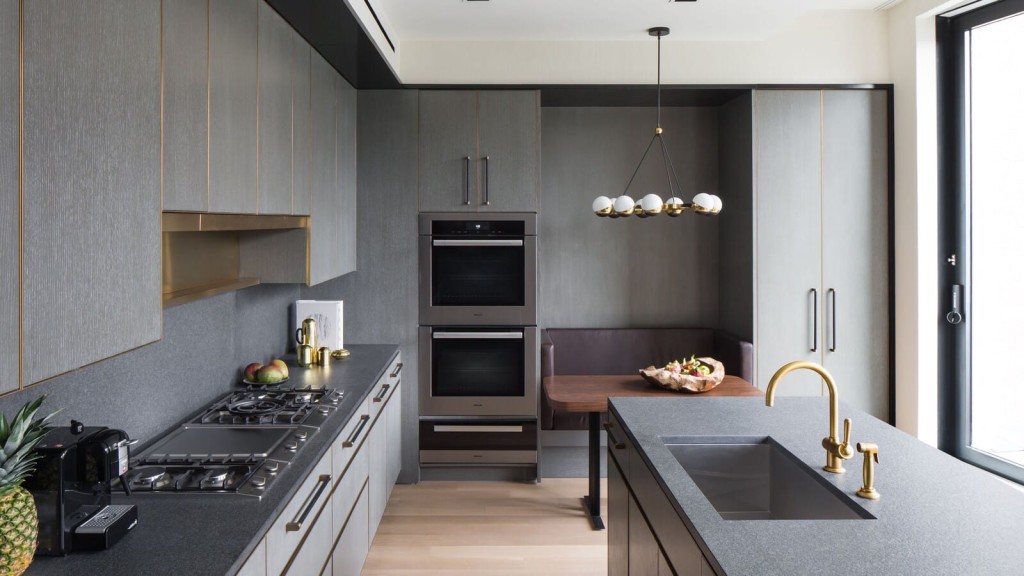
Kitchen designs featuring dark colours can have a really classy, dramatic impact and point to a strong sense of design confidence. To maximise the effectiveness of dark kitchens, a variety of elements need to be considered during the design process. For example, balanced lighting, use of metal, colour contrasts, mixing matte and glossy surfaces, and integrating wooden details, are all things to think about. This approach ensures that the design is visually striking, exuding class and elegance as pictured in this stunning home.
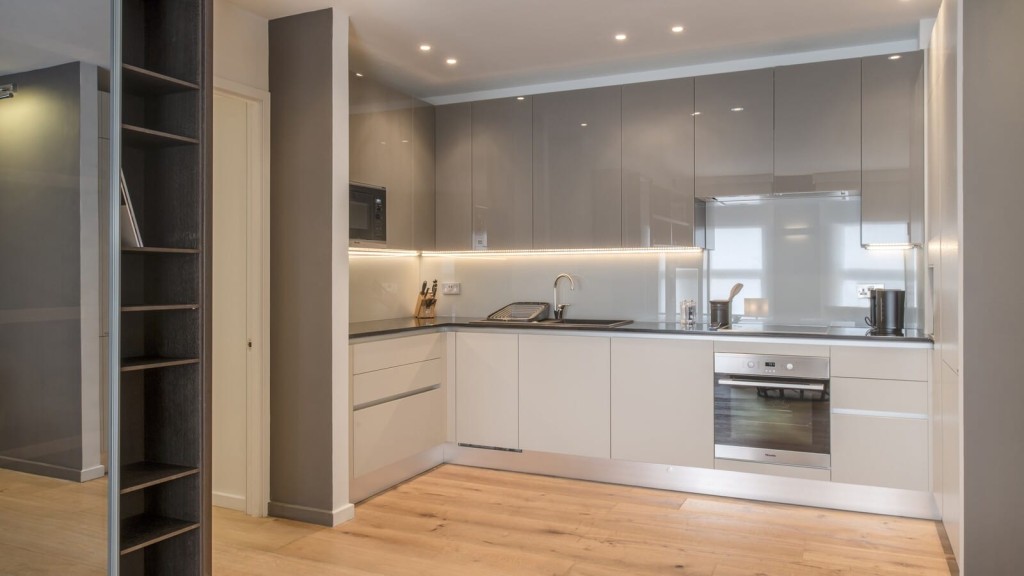
Thoughtful lighting is a key aspect of bringing a luxury kitchen to life. As captured in this design, incorporating efficient, stylish lighting fixtures can transform the ambiance of a space, while well-placed task lighting can enhance both the functionality and luxury feel of your kitchen design.
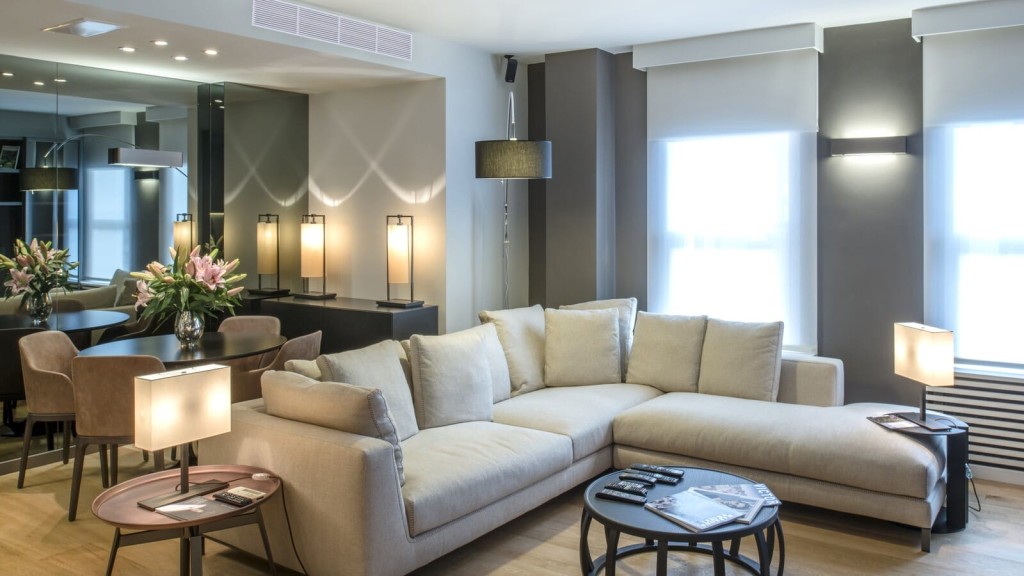
To enlarge small spaces, light colours are the way to go. Dark hues tend to make spaces feel smaller, while light tones add life and soften spatial boundaries. Adding mirrors, as seen on the back wall in this example, can visually expand a space. Strategic lighting, particularly in lighter shades, also plays a crucial role in creating the illusion of additional space.
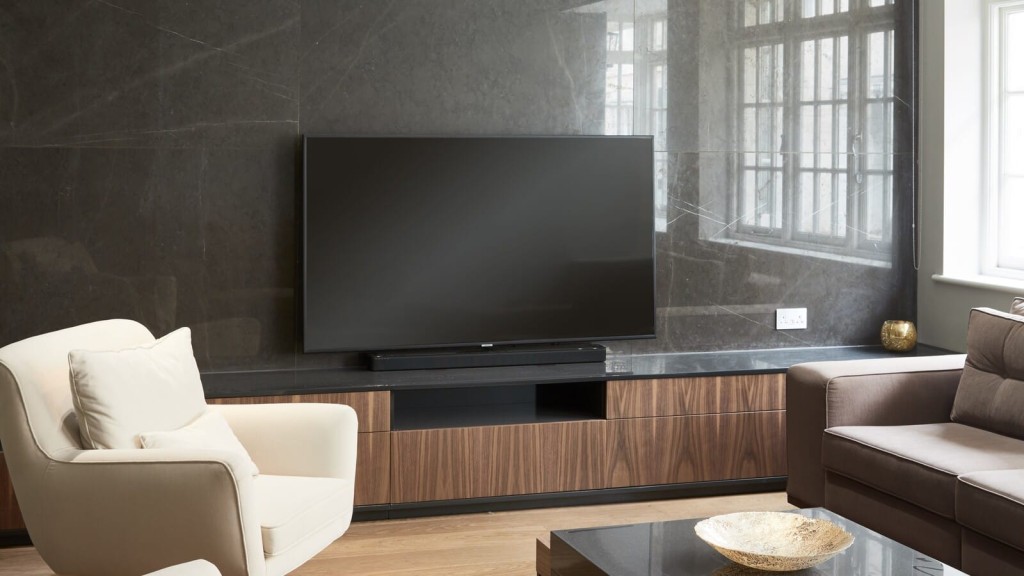
To create unity in interior spaces, let the colours and textures within the space inspire each other. Once you've chosen materials reflecting your concept, using them in different areas of the space will create a cohesive feel. This approach ensures the concept is consistently reflected throughout the space. Tips for coherence include using matching furniture sets, similar textured coverings, and a balanced distribution of warm and cool colours as we see in this design. This will enhance the overall unity of the room and create a warm, inviting space.
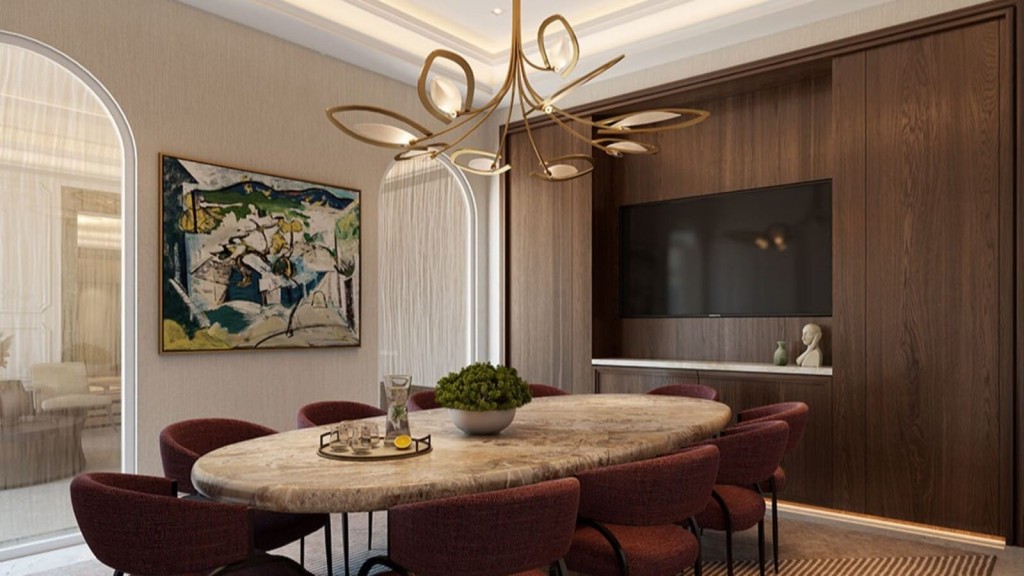
Image credit: 8 Eaton Lane by CIT (CIT GROUP PARTNERS LLP)
To create a luxurious and inviting dining area, the use of warm tones is key. Warm colours are high-energy, so balancing them with subtle cool tones as we see here can be beneficial. In spaces dominated by warm colours, soften that energy with daylight lighting that has a mild warm glow. This approach will help achieve a balanced, welcoming, and luxurious ambiance in your dining room.
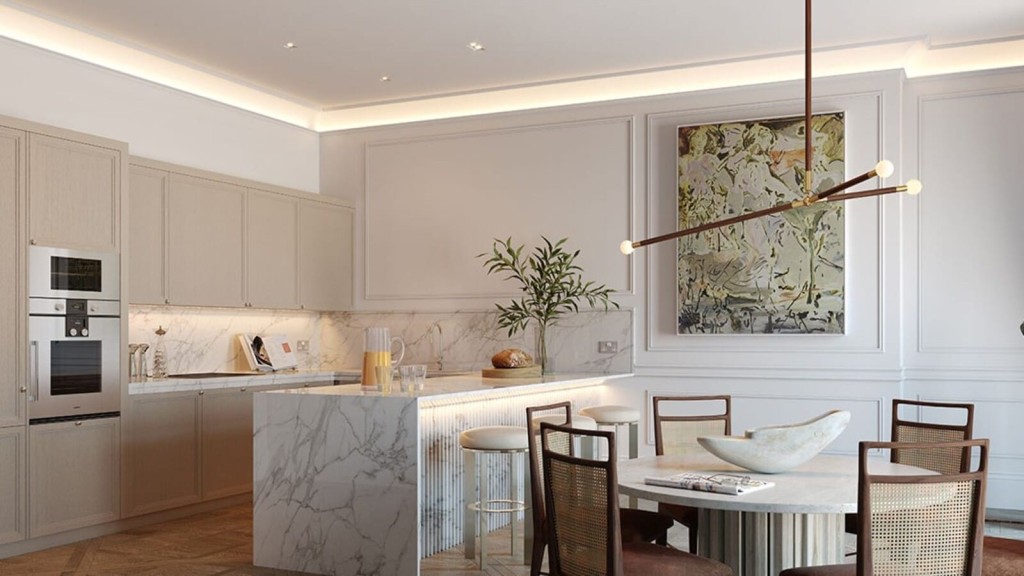
Image credit: 8 Eaton Lane by CIT (CIT GROUP PARTNERS LLP)
As displayed in this design, harnessing the serenity of neutral shades and enhancing them through the use of patterns and textures can have an incredible, rich effect. The patterned flooring, the marble benchtop, and the burnt sienna wood all might look fine on their own, but together, they take this space to the next level.
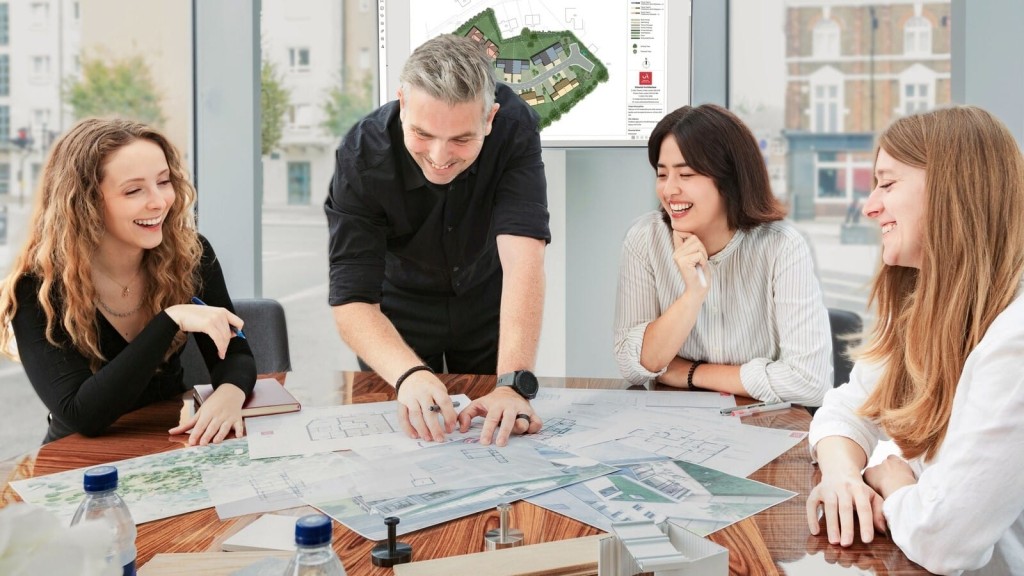
So there you have it: a deep-dive into the best luxury home refurbishments in London, covering everything from the importance of colour and tone to the immense difference quality materials and finishes can make to a space. If you aren’t sure whether or not a luxury refurbishment is suited to your interior tastes, then we’d strongly recommend using our bespoke interior design quiz to help you narrow down the look you’re most likely to love.
Whether your house is plotted in a conservation area or in the middle of the city, our team is highly specialised in providing elegant design solutions and thoughtful planning strategies that unlock the potential of challenging sites and buildings. We are also highly skilled in the area of interior design and know how to create breathtaking spaces that are as pleasurable to live in as they are to look at.
So, are you ready to unlock the hidden potential of your site, get planning permission, and design and build your dream luxury project? If you are, then get in touch with our friendly team today.

Ella Macleod BA, MArch is a solution-focused architectural designer who brings a thoughtful balance of creativity and practicality to every project. Valued for both her natural design talent and her ability to foster authentic relationships, she is quickly establishing herself as a rising talent in the architecture industry.
We look forward to learning how we can help you. Simply fill in the form below and someone on our team will respond to you at the earliest opportunity.
The latest news, updates and expert views for ambitious, high-achieving and purpose-driven homeowners and property entrepreneurs.
The latest news, updates and expert views for ambitious, high-achieving and purpose-driven homeowners and property entrepreneurs.


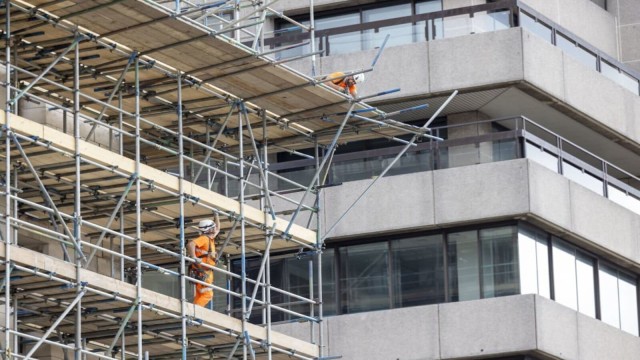
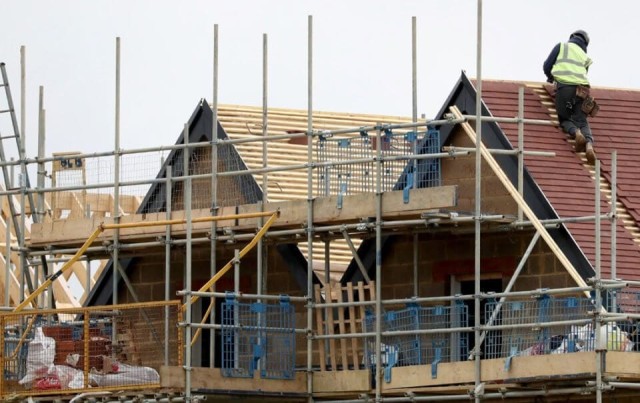
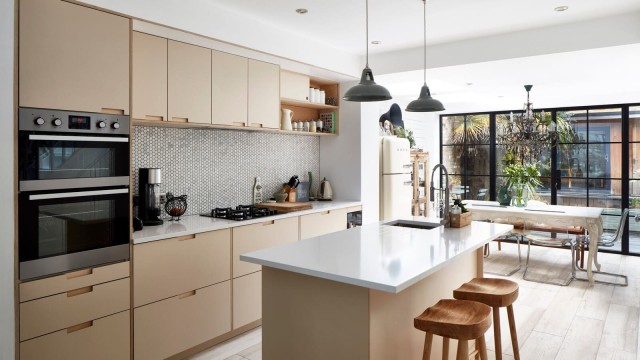
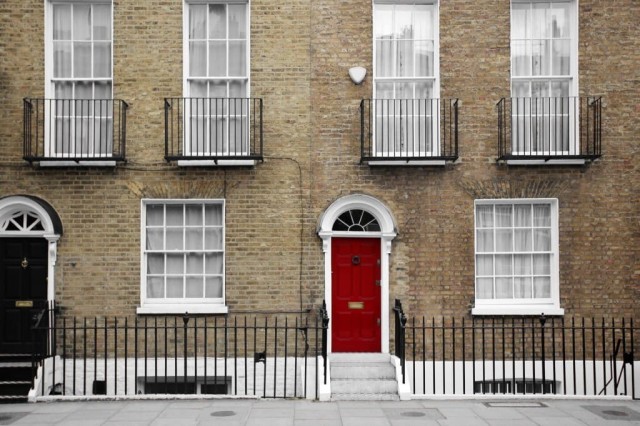



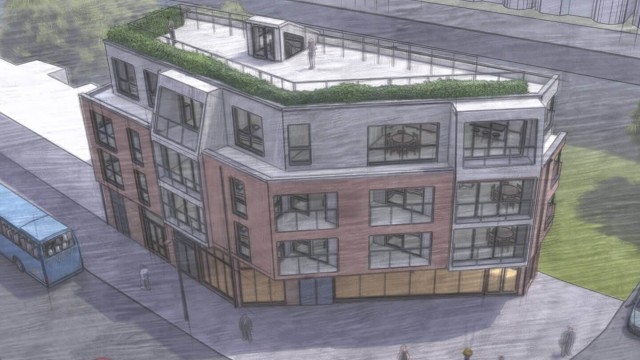
We specialise in crafting creative design and planning strategies to unlock the hidden potential of developments, secure planning permission and deliver imaginative projects on tricky sites
Write us a message